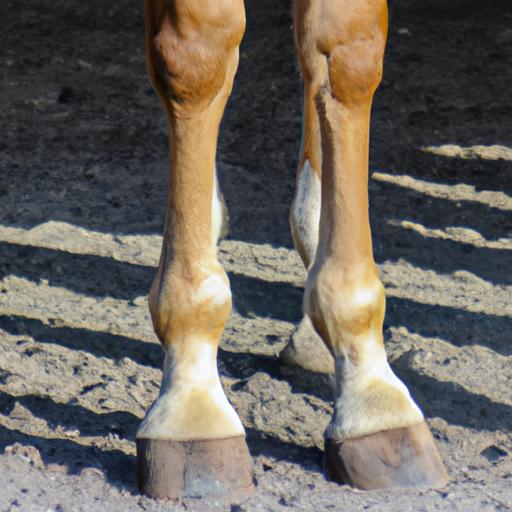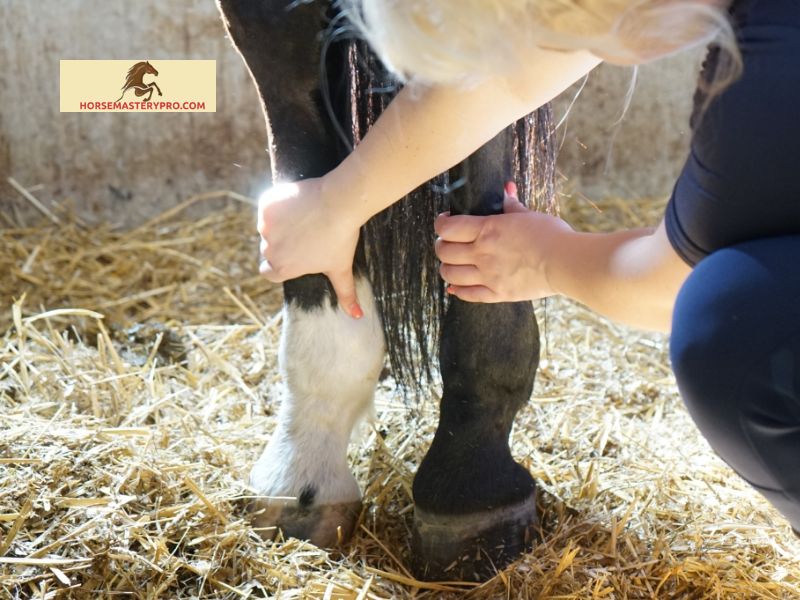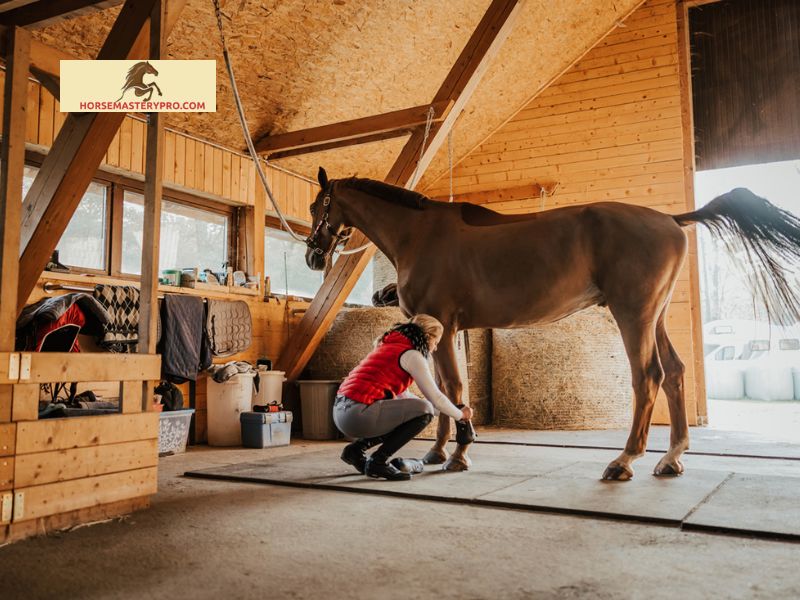Discover the importance of regular veterinary check-ups in horses. Identify potential issues, monitor and manage stocking up, and get expert advice for prevention and treatment.
When it comes to our equine companions, their well-being is of utmost importance. One common issue that horse owners often encounter is “stocking up.” But what exactly does it mean, and why should we pay attention to it? In this article, we will explore the significance of stocking up in horses and shed light on this matter that affects our beloved four-legged friends.
A. The importance of stocking up in horses for various reasons
As responsible horse owners, we must understand the significance of stocking up in horses. Stocking up, also known as leg swelling, occurs when fluid accumulates in a horse’s lower limbs, particularly in their legs. While it may not always be a cause for immediate concern, it can lead to discomfort and even potential health issues if left unattended.
B. Brief explanation of stocking up in horses
Stocking up in horses typically arises due to poor circulation or lymphatic drainage problems in their legs. Horses that spend prolonged periods standing in their stalls or lack regular exercise are more prone to this condition. The lack of movement allows fluid to accumulate, resulting in swelling. However, stocking up can also occur after intense exercise or due to certain underlying health issues.
Now that we have a basic understanding of stocking up in horses, let’s dive deeper into this topic. In the following sections, we will explore the causes, preventive measures, treatment options, and the importance of regular veterinary check-ups. So, saddle up and let’s embark on this insightful journey to ensure the well-being of our equine companions.
Stay tuned for Section II, where we will delve into Understanding Stocking Up in Horses and explore the causes and symptoms of this condition.
Understanding Stocking Up in Horses

As horse owners, it’s crucial to have a comprehensive understanding of stocking up in horses. This section will delve into the definition, causes, as well as the common symptoms and signs to identify this condition. Let’s explore further!
A. Definition and causes of stocking up in horses
Stocking up in horses, also referred to as leg swelling, is the accumulation of fluid in the lower limbs, particularly the legs. This condition occurs due to various factors, including:
- Poor Circulation: Horses that spend prolonged periods standing in their stalls without proper movement experience reduced blood flow to their legs. This stagnant blood can lead to fluid retention and subsequent swelling.
- Lymphatic Drainage Issues: The lymphatic system plays a vital role in removing excess fluid and waste from the horse’s body. When this system becomes compromised or inefficient, fluid can accumulate in the legs, causing swelling.
- Inactivity: Horses that lack regular exercise or turnout are more prone to stocking up. The lack of movement hinders the natural pumping action of the muscles, impeding proper circulation and leading to fluid accumulation.
B. Common symptoms and signs to identify stocking up in horses
Identifying stocking up in horses is essential for early intervention and appropriate management. Look out for these common symptoms and signs:
- Swollen Legs: The most apparent sign of stocking up is swelling in one or more legs. The swelling is typically soft and non-painful to the touch.
- Heat and Discomfort: In some cases, the affected areas may feel warmer than usual. Horses with stocking up may also exhibit signs of discomfort or stiffness in their legs.
- Pitting Edema: Gently press your finger against the swollen area. If an indentation remains for a few seconds after you release the pressure, it indicates pitting edema, a characteristic sign of fluid retention.
By being vigilant and observant, you can promptly recognize stocking up in your horses. In the next section, we will discuss preventive measures that can help mitigate the risk of this condition. So, let’s continue our journey towards ensuring the well-being of our equine companions!
Stay tuned for Section III, where we will explore the preventive measures for stocking up in horses, helping you keep your horses happy and healthy.
Preventive Measures for Stocking Up in Horses

When it comes to stocking up in horses, prevention is key. By implementing a few simple measures, we can significantly reduce the risk of leg swelling and ensure our equine companions remain in optimal health. Let’s explore some preventive measures that horse owners should consider:
A. Maintaining a proper diet and nutrition
A well-balanced diet plays a crucial role in preventing stocking up in horses. Ensure that your horse’s diet includes sufficient amounts of essential nutrients, such as vitamins, minerals, and proteins. Consult with a veterinarian or equine nutritionist to determine the appropriate diet for your horse’s specific needs. Remember, a healthy horse is less likely to experience fluid retention in their legs.
B. Regular exercise and turnout
Regular exercise and turnout are essential for maintaining healthy circulation in a horse’s legs. Encourage daily exercise, whether through turnout in a pasture or engaging in regular riding activities. Movement stimulates blood flow and encourages lymphatic drainage, reducing the chances of stocking up. However, be mindful of gradually increasing exercise intensity to prevent overexertion.
C. Proper bedding and stall management
Creating a comfortable and clean environment for your horse is crucial in preventing stocking up. Ensure that the bedding in their stalls is adequately cushioned and regularly cleaned to minimize the risk of injuries and infections. A clean and well-maintained stall promotes proper leg circulation and reduces the likelihood of swelling.
D. Use of leg wraps or bandages
Consider utilizing leg wraps or bandages during periods of inactivity or during transportation. These aids provide support to the horse’s legs and promote circulation, helping to prevent fluid accumulation. However, it is essential to consult with a veterinarian or an experienced equine professional to ensure correct application and usage of leg wraps or bandages.
By implementing these preventive measures, we can significantly decrease the chances of stocking up in our horses. However, it’s important to remember that each horse is unique, and their needs may vary. Regular monitoring and adjustments to their care routine may be required to ensure their well-being.
Next up, in Section IV, we will explore the various treatment options available for stocking up in horses and discuss when veterinary consultation is necessary.
Treatment Options for Stocking Up in Horses

When it comes to addressing stocking up in horses, there are several treatment options available. It’s important to remember that each horse is unique, so consulting with a veterinarian is crucial to determine the most suitable course of action. Let’s explore some common treatment options for stocking up in horses:
A. Veterinary consultation and diagnosis
The first step in addressing stocking up in horses is to seek professional guidance. A qualified veterinarian will conduct a thorough examination to diagnose the underlying cause of the leg swelling. This may involve evaluating the horse’s overall health, assessing their movement, and potentially performing diagnostic tests such as X-rays or ultrasounds. By identifying the root cause, the veterinarian can tailor the treatment plan accordingly.
B. Medications and therapies for reducing swelling and inflammation
Once the veterinarian has diagnosed the cause of stocking up, they may prescribe medications or recommend therapies to reduce swelling and inflammation. Non-steroidal anti-inflammatory drugs (NSAIDs) are commonly prescribed to alleviate discomfort and reduce swelling in the affected limbs. Additionally, diuretics may be administered to promote fluid drainage and alleviate edema. It’s essential to follow the veterinarian’s instructions regarding dosage and administration of medications.
Complementary therapies such as cold therapy or the application of leg wraps, which can help reduce inflammation, may also be recommended. Cold therapy can be administered using ice packs or cold water baths, while leg wraps provide compression and support to reduce fluid accumulation. These treatments can aid in relieving discomfort and promoting circulation.
C. Alternative treatments and home remedies
In addition to conventional treatments, some horse owners explore alternative therapies or home remedies to address stocking up. These can include herbal supplements, massages, or the use of natural remedies. While these approaches may provide relief for some horses, it’s crucial to consult with a veterinarian before incorporating any alternative treatments. They can offer insights into the safety and efficacy of these methods, ensuring the well-being of your horse.
By working closely with a veterinarian and considering appropriate treatment options, we can effectively manage stocking up in horses. In the next section, we will discuss the importance of regular veterinary check-ups to prevent and monitor stocking up. So, let’s saddle up and continue our journey towards keeping our equine friends in optimal health.
Stay tuned for Section V, where we will explore the Importance of Regular Veterinary Check-ups in managing stocking up in horses.
Conclusion
In conclusion, stocking up in horses is a condition that demands our attention as responsible horse owners. Understanding its causes, symptoms, and preventive measures can greatly contribute to the overall well-being of our equine companions. By maintaining a proper diet, ensuring regular exercise, and implementing sound stall management practices, we can reduce the risk of stocking up in horses.
Regular veterinary check-ups play a vital role in keeping our horses healthy. These check-ups allow for early detection of potential issues before they become severe. Veterinarians can provide expert advice on preventive measures and treatment options specific to each horse’s needs. Their professional guidance ensures that stocking up is effectively monitored and managed, promoting optimal health and comfort for our equine friends.
At horsemasterypro.com, we understand the importance of stocking up in horses and the impact it can have on their well-being. Our mission is to provide horse owners with comprehensive information and resources to help them better care for their horses. By staying informed, implementing preventive measures, and seeking professional guidance, we can ensure that our horses lead happy, healthy lives.
So, let’s make stocking up in horses a priority and take the necessary steps to keep our equine companions thriving. Together, we can create a community of knowledgeable horse owners who prioritize the well-being of their horses.
Remember, at horsemasterypro.com, we’re here to support you every step of the way on your journey to becoming a skilled and responsible horse owner.
Thank you for joining us on this informative exploration of stocking up in horses. Stay tuned for more engaging content on horsemasterypro.com.


